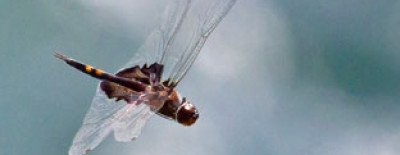What lives here? Where is it? What's common? What's at risk? What will be? As human activity profoundly alters the map of life on local and global scales, our response requires knowledge of plant and animal distributions across vast landscapes and over long periods of time.
Vermonters cannot respond effectively to climate change, natural disasters, invasive species, and other environmental and economic threats without an understanding of the state's living resources. At stake is nothing less than the health of our natural world, economy, and human health itself.
Contribute to a Crowdsource Project
From birds to butterflies and everything in between, your biodiversity sightings can make a difference. Join our growing community of citizen naturalists from around the Green Mountain State in discovering and sharing observations of Vermont life. Your observations can be turned into research-grade, citizen science data that will help us discover, track and ultimately conserve our natural heritage.

Vermont eBird
A real-time, online checklist program, since 2003 Vermont eBird has revolutionized the way that the birding community reports and accesses information about birds.

eButterfly
A real-time, online checklist program for butterfly watchers, eButterfly is providing a new way to report, organize and access information about butterflies in Vermont and beyond.

Vermont Atlas of Life on iNaturalist
Vermonters marvel at the life around us all the time. What if all those observations were shared online, creating a living record of biodiversity in Vermont that could be used to monitor changes and learn more about nature? That's the vision behind this project.

Odonata Central
Odonata Central is place where you can keep track of all your dragonfly and damselfly observations, photos and specimens and manage all your personal lists, all while contributing to the Vermont Odonate Atlas.
Explore Or join a Wildlife Atlas Project
Vermonters have long upheld a tradition of documenting biodiversity. Biologists and citizen scientists have recently completed major statewide surveys of breeding birds, butterflies, reptiles and amphibians, beetles, giant silk moths and more. Explore these specific surveying efforts and learn about the diversity and conservation status of our natural heritage.

Second Vermont Butterfly Atlas (2023-2027)
Twenty years ago hundreds of community scientists joined us for the first Vermont Butterfly Atlas, heralding a new era for their conservation. Now with your help, we have the rare opportunity to understand long-term trends in butterfly populations across the state and help conserve them.

Vermont Lady Beetle Atlas
Did you know that 34 native lady beetle species have been documented in Vermont? Unfortunately, almost half of these species have not been reported recently. Are they truly gone? It's a mystery we're eager to solve. Learn more about these insects and help us find them!

Vermont Wild Bee Survey
Although we estimate there are about 300 species of wild bees in Vermont, there has never been a full survey. Without even a checklist of species, it is very difficult to know whether populations are healthy or declining. VTBees is the first step in assessing bee populations across Vermont.

Vermont Vernal Pool Atlas
The Vermont Vernal Pool Atlas is an online, interactive database that compiles and archives data for the Vernal Pool Mapping Project and the Vernal Pool Monitoring Project. Browse the Atlas or join and submit information about vernal pools you visit.

Vermont Moth Atlas
The Vermont Atlas of Life, with the aid of many volunteers across Vermont, has been mapping moth distribution and phenology one photo-observation at a time. You can help us record and map all moths– rare or common. Take digital photographs and submit your observations!

Vermont Bumble Bee Atlas
From 2012 to 2014, VCE biologists and citizen scientists spread across the state, from roadsides to mountain meadows, to survey bumble bees, and the similar appearing, Eastern Carpenter Bee. Nearly half of these bees are of conservation concern.

Breeding Bird Atlas
The Vermont Breeding Bird Atlas is the most comprehensive bird survey in the state, and occurs only once every 25 years. The first atlas was from 1976-1981 and the second was completed in 2003-2007. Learn about the birds and their populations changes and join us for the third atlas in just a few more years!

Dragonfly and Damselfly Atlas
Vermont's fauna was poorly known until a new wave of fieldwork beginning in the late 1990s quickly relieved Vermont of its reputation as the most mysterious among New England states for odonates. This atlas presents the evidence.

Atlas of Vermont Orthoptera (Grasshoppers, Crickets, Katydids)
Welcome to the most comprehensive assessment of Vermont Orthoptera ever assembled. The Atlas of Vermont Orthoptera is also a living survey, growing every year with new discoveries and updated distribution maps.

Tiger Beetle Atlas
There are many passionate followers of tiger beetles. Vermont has 17 species of these charismatic insects and over half of them are of conservation concern. This atlas represents years of field work by many contributors with new records added each year.

Vermont Reptile and Amphibian Atlas
This independent project, with the help of volunteers and collaborations with organizations such as VCE, collects distribution and other information to help conserve Vermont’s reptiles and amphibians. All sightings added to the Vermont Atlas of Life on iNaturalist are shared with this project.

Vermont Freshwater Mussel Atlas
The mission of the Vermont Freshwater Mussel Atlas is to bring past, present, and future knowledge about freshwater mussel biogeography into currency for conservation, science, and society. Vermont has 18 native species and the majority are of conservation concern. Learn more about these bellwethers of water quality.






